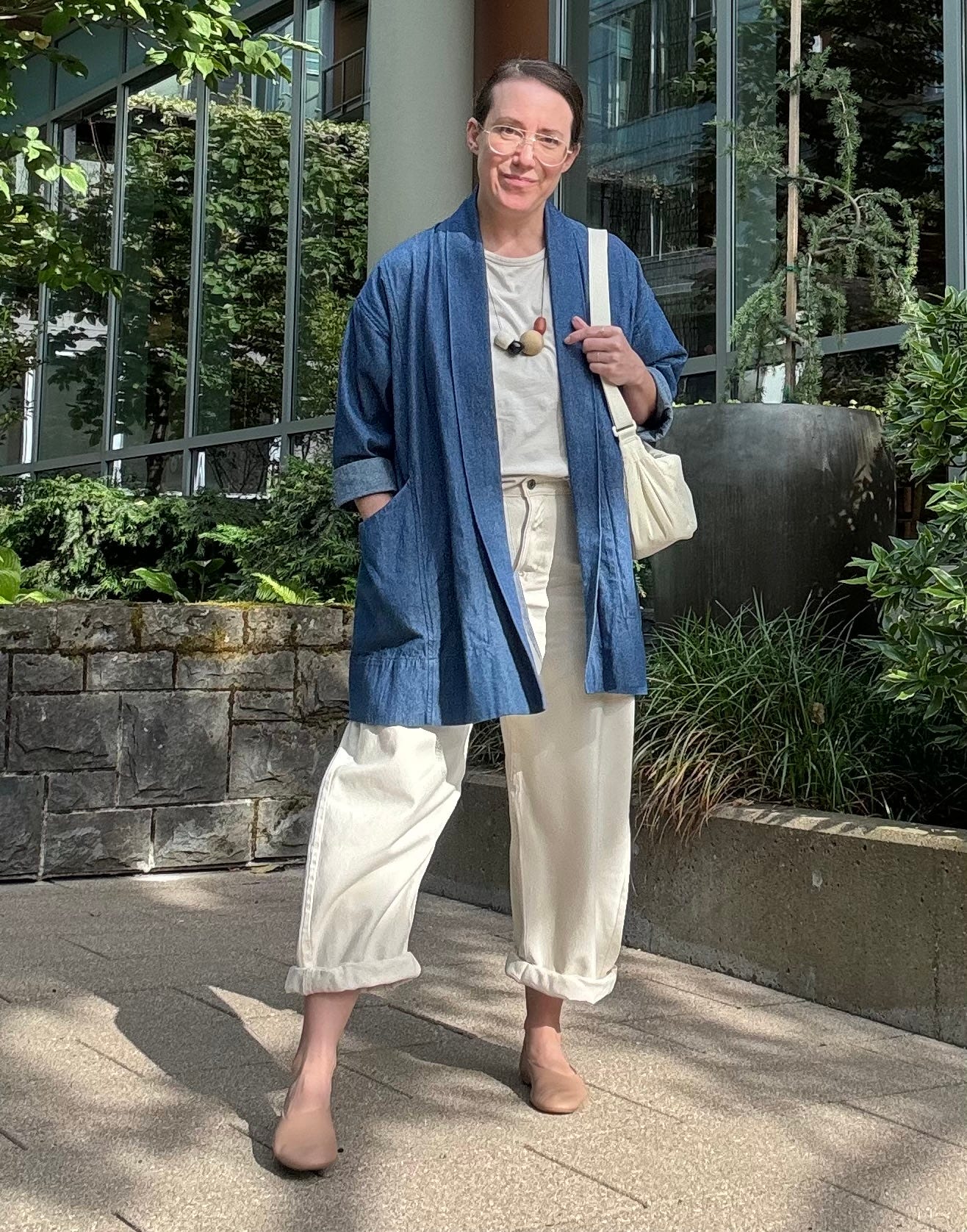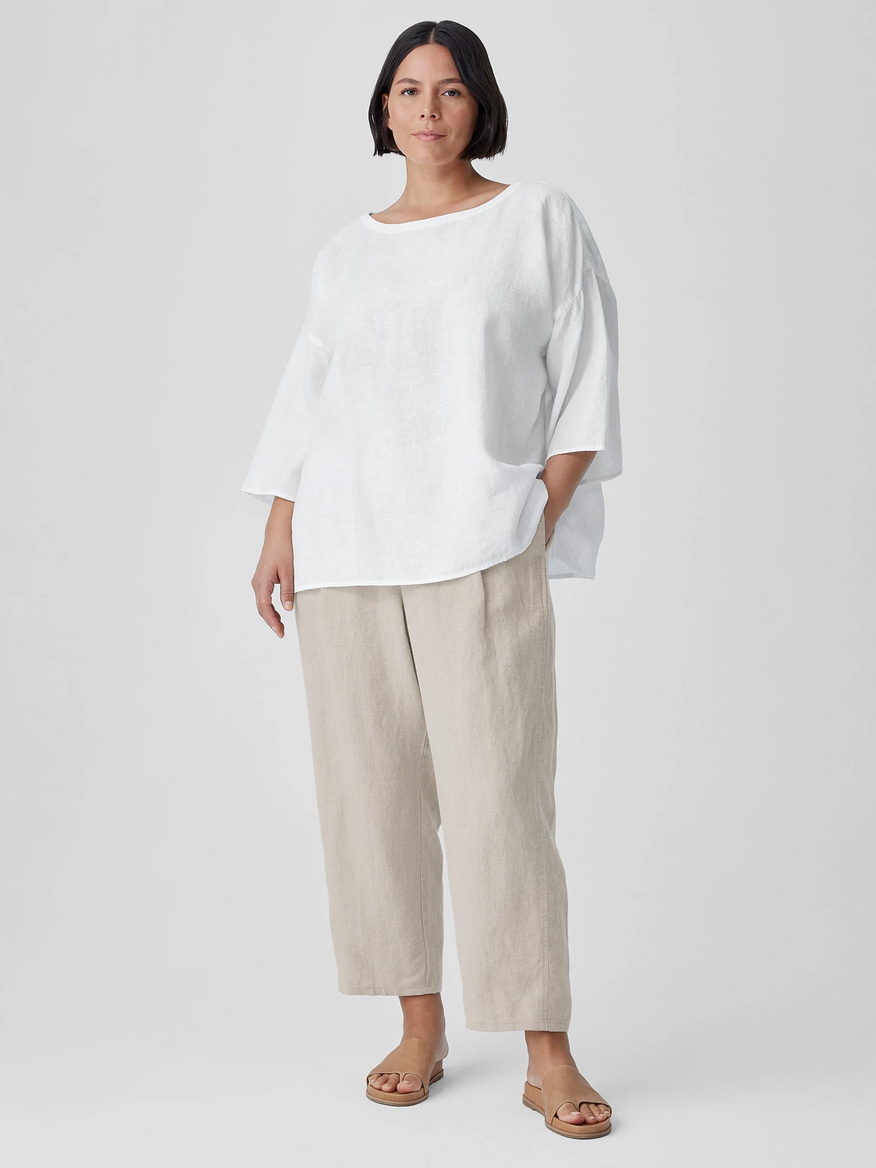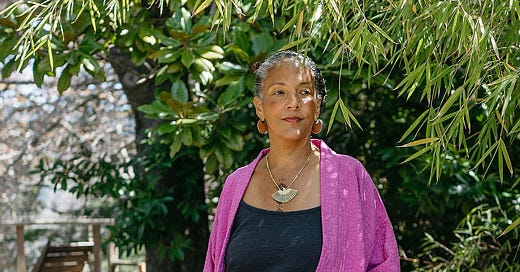a few of my favorite ethically made brands
and a rant about the prices we expect to pay for clothes
I’ve never had a large budget to spend on clothes. The most I’ve ever spent on one item is $350, which is admittedly a lot, but that doesn’t happen often. As I mentioned on Tuesday, the majority of my clothing is secondhand, and so even though I have a broad knowledge of ethical brands, they’re not necessarily where I most frequently purchase clothes. But the brands here are ones whose clothes I like, who’ve worked well for clients, whose practices I admire1, who make clothes in a range of sizes up to at least 3X, and who (I just realized while editing this post) use models of all sizes in their images.
Before we jump in, here’s something I was thinking about while putting together this post. Below, I mention a top from one of these brands that’s on my wishlist. The price of said top ($78) is a great illustration of how ethical fashion might seem expensive, but when compared to fast fashion, often isn’t.
You could easily buy a $78 shirt from Anthropologie or Banana Republic which would have been made from inexpensive fabric by poorly paid workers across the world, shipped, distributed, and finally trickled down into your local store and and the bulk of that money would be going towards logistical costs and middlemen, while almost none goes to the person who made it. This brand uses local sewing factories in San Francisco and the garment will have been sewn from beautiful fabric by a woman in that factory and then sent to you, having only been touched by a few people, for the same cost.
Is $78 a lot for a top? It depends. Clothing is something that our society has devalued at the same time as it encourages the consumption of. A garment made by a human2, of quality fabric, shouldn’t be the cost of a cup of coffee or a sandwich. We’ve been conditioned to believe it should so that we’ll consume more.
Here’s an image I’ve been saving on my desktop for just such an occasion. This is an advertisement for an affordable dress sometime in the 1950’s. The “low-low price” of this dress was $9. Do you know what $9 is in today’s prices?
It’s $106.11.
Over one hundred dollars for the cheapest option out there. Can you imagine what a high end dress would have cost back then? The fact that we can still buy a $9 dress today is just…not right.
/rant
On to the brands:
There are so many more brands out there that I don’t have time to list here. However, I do have them listed in my retailer spreadsheet that is a perk of the unflattering membership. The full spreadsheet has 240 retailers (94 of which are ethically made) sorted by sizes available, price range, and style.
Elizabeth Suzann. Really my entry point into this world, I first fell in love with Elizabeth Suzann’s designs and then everything about how she ran her brand. I was able to visit her workshop in Nashville years ago and saw it all with my own eyes. I own a few items I purchased directly from the brand (that $350 purchase mentioned above was my Clyde denim jacket), a few secondhand, and a few that I sewed from her patterns.

Eileen Fisher. From all the research I’ve done, I think this is one of the brands doing the most to be sustainable and ethical from end to end of the entire clothing production process. What really impressed me was getting to know some of the women working at my local store. Like most retail workers, they’re required to wear the brand’s clothing to work, but Eileen Fisher provides a clothing allowance so that they don’t have to buy those clothes out of their paycheck, which fast fashion retail brands don’t do. Small thing, but made an impression. You can easily find Eileen Fisher items secondhand from $10-20.







